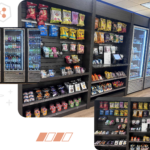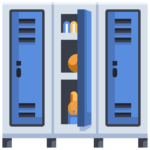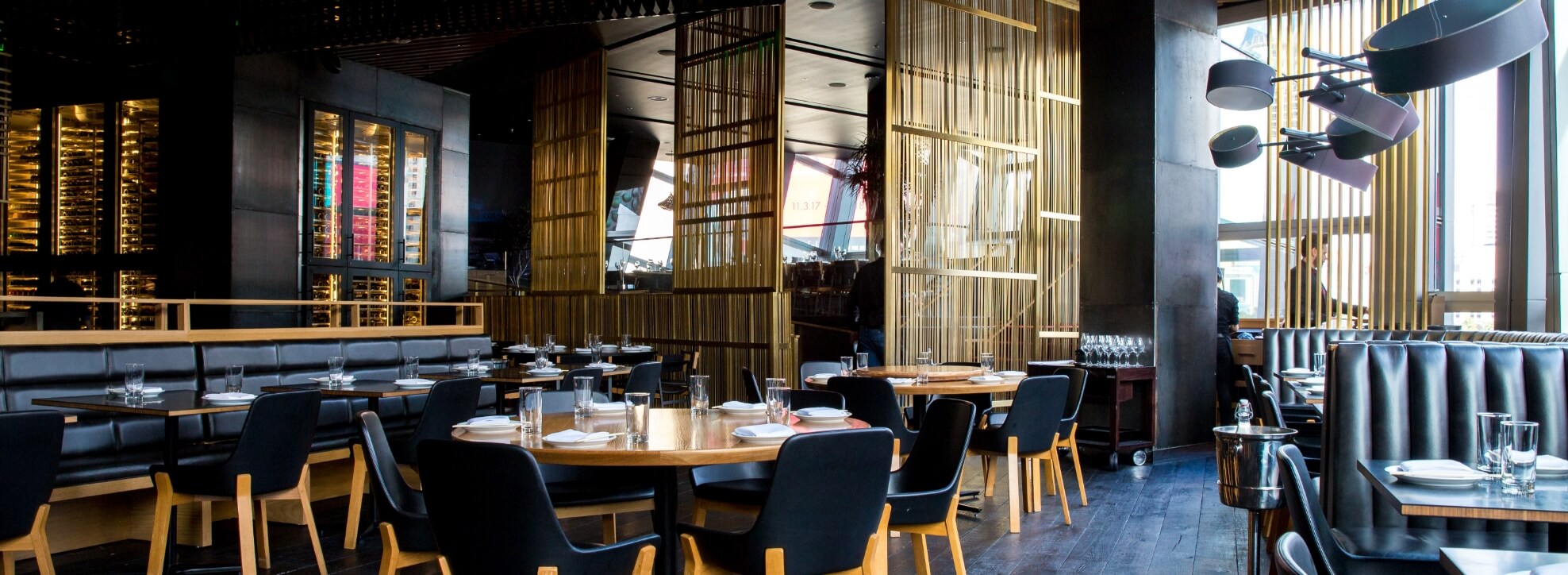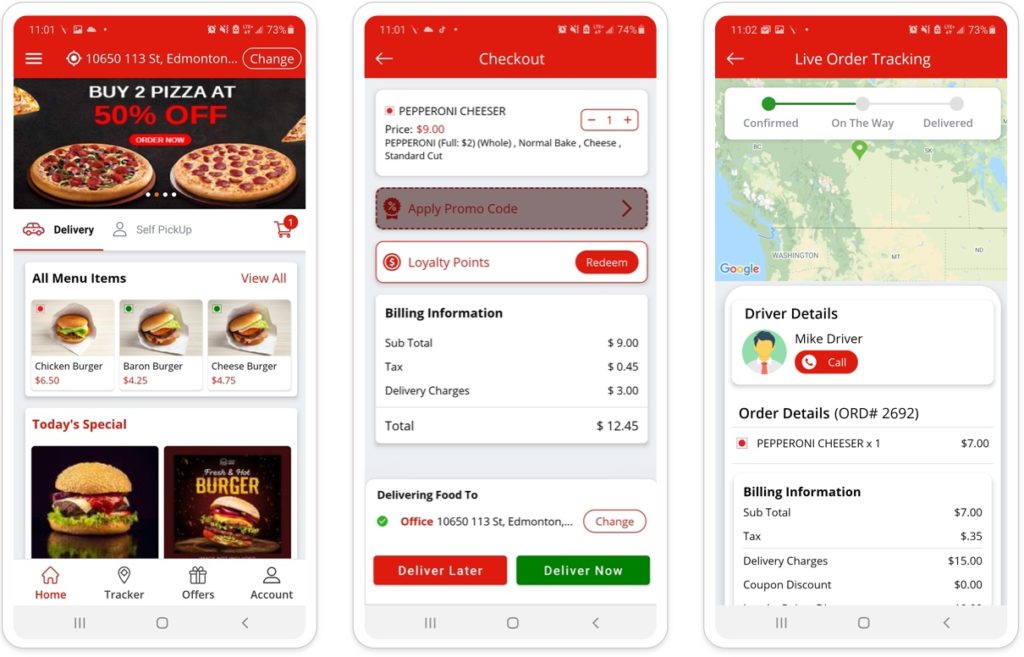
What Are the Advantages of an Online Food Ordering System?
Table of Contents
Restaurants have thrived for hundreds of years without the help of the internet. In all likelihood, your own restaurant may have done just fine throughout the internet age so far. So, you may be wondering, why take on the added expense and work of making it possible for your customers to order their food online?
After all, it’s easy enough for customers to place takeout orders over the phone, referencing their printed menus or the lists already posted on your website. And if your restaurant has a relatively quick order turnaround time, such as in the case of a sandwich or coffee shop, your patrons may be fine with continuing to order in person and then sticking around to pick up their order a short time later.
However, the fact is that as more and more restaurants embrace the conveniences of online ordering, not giving customers an option to order online puts your restaurant at more and more of a disadvantage.
The good news is that embracing an online food ordering system might not be as much work as you think. Even restaurateurs who aren’t tech experts can get a system up and running relatively easily these days.
In this article, we’ll explain a few of the benefits of using an online food ordering system for your restaurant, and then we’ll go over your food ordering system options and explain how to choose one.
Benefit 1: Fewer Expensive Errors
When your restaurant staff takes orders over the phone and writes down the order details manually (or even inputs the order directly into the POS system), there’s plenty of room for error. Customers aren’t ordering face-to-face, which makes communication slightly more difficult and can lead to employees accidentally marking down the wrong size or choice of meal, or misunderstanding special instructions.
By contrast, ordering online gives customers a chance to review their orders visually, so those mistakes simply don’t happen.
Order mistakes are expensive for your restaurant. First there are the direct costs: Your staff will usually need to make the dish again the right way, which wastes food and takes time. Front-of-house staff will also have to spend extra time trying to pacify customers and rectify the mistakes.
But there are also long-term costs from ordering miscommunication: When customers don’t get what they asked for, it certainly affects how they feel about your restaurant and discourages them from returning in the future.
Other order details, such as the name of the customer who will pick up the order, the time that they expect to pick the order up, and the total cost of the meal are also much clearer to both customers and employees when customers can place orders themselves online.
These clear details contribute to a superior customer experience.
Benefit 2: Reduced Staffing Costs
Requiring your customers rely solely on the phone for placing delivery or takeout orders isn’t just more prone to errors. It may also be more expensive for you as an owner.
After all, you’ll need to make sure that someone is available to answer the phone at all times, and that an employee who could be doing other things to improve your restaurant stays near the phone and manually takes every single order. When the customer places orders online via food ordering software, there’s virtually no work for your staff to do. With most of the best online food ordering systems, the order simply appears in the kitchen display system with no additional work required.
Encouraging your customers to order online might mean that you can spend less on staffing, or it might mean that your staff can spend their time in more profitable ways.

Benefit 3: More Sales and Revenue
By making ordering more convenient, you’re making your restaurant more competitive. You’ll increase its appeal to a broader group of customers, which can in turn boost your sales.
If you don’t have personal experience ordering a meal online, you might not know just how much more convenient online ordering can be compared to phone ordering. Let’s take a moment to clarify all the conveniences.
With an online food ordering system, customers can easily place food orders with a smartphone even if they’re somewhere that’s not ideal for a phone call, such as riding the bus or caring for small children. They can order their food at their own pace without worrying about being interrupted. And many online food ordering systems allow customers to easily access their personal information, favorite orders, and order history easily once they’ve created an account, which means that they don’t have to re-enter it again each time they order. Plus, modern internet browsers can securely save people’s passwords and credit card info, so it has become almost effortless for your customers to log in and purchase food.
Once you consider all of those conveniences — especially compared to asking customers to verbally read out a 16-digit credit card number over the phone and repeat it if there’s a mistake (not to mention the privacy concerns this may cause if you’re trying to order from a public place) — you’ll start to understand why so many people now actively avoid ordering their meals via phone call.
Once you understand how convenient it is to order food online, you’ll start to understand why so many people avoid ordering their meals via phone call.
In fact, you may find that by embracing online ordering, you can reach an entirely new group of customers. But online food ordering systems boost revenue in other ways, too.
One way is by encouraging more upsells. The food ordering software can recommend things like side dishes, appetizers, drinks, and desserts. These recommendations are paired with appetizing images, and they can pop up at just the right point in the ordering process. That’s something that’s impossible to replicate when you take all food orders over the phone.
Finally, offering online ordering cuts down on wait times for those less-technically-inclined customers who haven’t yet adapted to online ordering. When customers only have the option to call to order food, they’re more likely to end up on hold while they wait for someone else to finish their order.
So, online food ordering systems also make ordering more convenient for regulars who are used to ordering on the phone, so you boost both revenue and customer loyalty for both types of customer.
Benefit 4: Reduced Risk of Disease Transmission
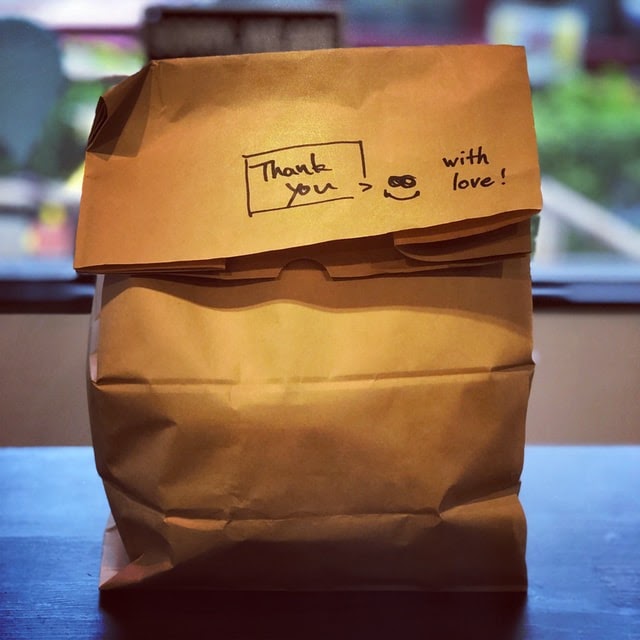
Many restaurants that accept takeout orders over the phone don’t also accept payment over the phone.
We already mentioned that using a credit card over the phone is annoying and tedious for both the customer and the employee. Swiping or inserting the card is much simpler and in most cases more secure.
For that reason, many restaurants still expect customers to pay for the food once they arrive at the restaurant to pick it up, or at the point of delivery.
However, paying in-person has new downsides in the era of COVID-19. People generally don’t want to risk coming within close contact of other people if they don’t have to, and they generally don’t want to touch shared objects like pens, credit cards, and receipts.
Online food ordering systems make it easy for customers and employees to stay a safe distance apart. Customers can simply pick up their food from a designated pick up area within the restaurant, or pick it up at the counter without having to prolong the transaction and increase potential transmission risk.
Benefit 5: Better Customer Relationships
One of the best ways to boost income is to proactively reach out to the people who have ordered from you in the past. Think of it this way: You’ve already invested plenty of time and money into attracting each customer who dines at your restaurant — from paying for space in a visible area to keeping your social media profiles updated to even running ad campaigns to boost awareness.
If you don’t make an effort to capture your customers’ contact information before they leave your restaurant, you’re wasting an easy opportunity to get a better return on everything you’ve invested up to that point.
If you have a solid list of customer emails or phone numbers, you can reach out with news of seasonal specials and other events and opportunities. You can time these campaigns to boost income during times that might otherwise be slow.
But customers aren’t likely to opt into your email marketing list or SMS marketing list when they order their food over the phone.
We already discussed how annoying it is to verbally take payments, and the same logic applies to email addresses. But if customers use an online food ordering system instead, they can opt into these opportunities to stay in touch easily — perhaps even using an autofill feature in their internet browser so they don’t even have to manually type their email address or phone number.
Considering the fact that customers usually need to add their contact info for checkout anyway, opting into a restaurant’s email list may become as simple customers’ checking a box on the checkout screen. That’s why online food ordering systems make it much easier for you to build a marketing list and boost your restaurant’s customer retention and loyalty rates.
In the past, many restaurants have relied on analog advertising methods such as sending out postcards or physical coupons to the people who live nearby. But we’ve noticed that the returns for this kind of investment pale in comparison to simply reaching out to the customers in your contact list with a digital message.
First of all, there’s typically no additional cost to email or text customers who have opted in via your online food ordering system, whereas print campaigns have a cash cost. But also, it’s typically easier to convince customers who already are familiar with you to come back than it is to spend money trying to start new relationships from scratch.
Which Online Food Ordering Option is Best for Your Restaurant?
When it comes to actually selecting an online food ordering system for your restaurant, you generally have three options to choose from: third party delivery apps, web store apps, or POS systems. Each one has advantages and disadvantages.
Third party delivery apps
Certainly you’re familiar with services like DoorDash and Grubhub by now. Although these apps were developed primarily for delivery purposes, they can also be used for takeout only as an online food ordering system.
The upside to using these services is that the setup is relatively easy and you can get attention from an audience that’s already logging in when they’re ready to order food.
The biggest drawback is the hefty commissions you’ll have to pay to the services for each meal you sell through the apps. And because these apps aren’t integrated with your POS systems, the financial and inventory data from those sales will have to be manually added to your other accounting and inventory tracking systems.
However, you also won’t be able to retain the customer data from each order. That means you won’t be able to reach out to those customers again as it suits your restaurant. You may have to pay for additional visibility or to publicize special deals. Plus, you won’t have total flexibility over how the app displays your brand and your menu.
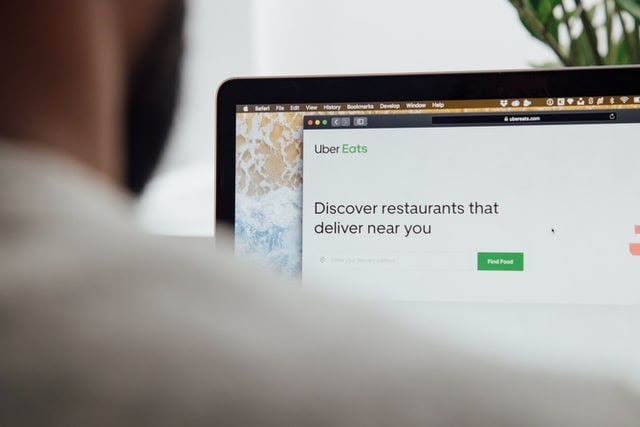
Web store apps
It’s also possible to use web store apps that come with popular web builder software programs to sell meals online via your website.
These programs can be relatively easy to set up and inexpensive to use, but were originally designed for retail. That means they don’t have a lot of restaurant-specific features, and they won’t integrate with your in-store point of sale system or kitchen display system.
Point of sale systems
The best point of sale systems come with online ordering features seamlessly integrated.
That means all of your reports and inventory totals will be updated in real time as orders are placed both online and in-store, and you retain total control of your brand and your customer data. Better data helps you plan more accurately for demand, which means you’ll save money on food costs and on staffing. Online orders are sent to the kitchen display system along with in-store orders with little room for confusion or error.
Many POS programs also include email marketing features so you can contact groups of customers easily without having to invest in another app.
When your restaurant is overstaffed, you waste money and frustrate your employees. (After all, no one wants to work on a slow day when tips will be minimal).
Modern POS systems allow administrators access to detailed reporting systems that can use data to predict demand more accurately, which means you can keep staffing levels more appropriate, keep employees happier, and avoid paying employees to stand around with nothing to do.
Ready to get Started?
If you’re ready to learn more about a point of sale system that has all of the features mentioned in this article and was designed specifically to be affordable for restaurant owners, feel free to check our online ordering software or our buying guide on how to pick the best online ordering systems for restaurants.
Our onboarding process is consultative, so even owners with little tech experience will feel comfortable using the system at the end of the process.
Our mission is to help all restaurant owners adapt to changing market demands and thrive for the long-term.

